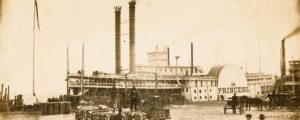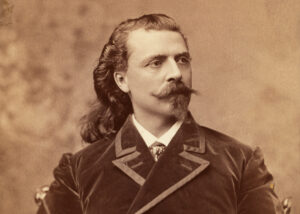One current image of Amsterdam is as a kind of Dutch Sodom, a tulip- and canal-lined cornucopia of sex, drugs, and rock ’n’ roll. But underlying this “permissiveness” is a long tradition of tolerance, despite (or because of) a long history of brutal oppressors, including the Inquisition, the Hapsburgs, Napoleon, and the Nazis.
To really understand World War II Amsterdam requires more than a pilgrimage to the well-known Anne Frank Huis, as inspiring as that is. Instead, fold that visit into a tour of Verzetsmuseum (Dutch Resistance Museum), Joods Historisch Museum (Jewish Historical Museum), and Amsterdams Historisch Museum (Amsterdam Historical Museum).
Dutch Calvinists hid Jews during the Nazi occupation, and Dutch fascists staffed the transit camp that sent thousands to German death camps. So what about everybody else? Verzetsmuseum exposes and explores the complex dynamics of Nazi era Holland in a densely packed sequence of exhibits that integrate historical overviews with individual perspectives.
The strikingly designed presentation follows a circular walk through chronological milestones: 1930s ferment; neutrality and the Rotterdam bombing; the low-key Nazi attitude after surrender to win over their “cousins”; the 1940 carnation-wearing passive resistance parade, which triggered Nazi reprisals; the Japanese cake walk conquest of the Dutch East Indies; the 1943 strike to protest universal conscription of Dutch males into Albert Speer’s work force; the “hunger winter” after Allied failure at Arnhem; and finally, victory and after.
From each of these nodes open rooms and niches housing the products of intensive research. Artifacts (such as newspapers, typewriters, letters, photos, and personal effects) are cunningly displayed behind varisized windows; films and the words of individuals, from Nazis and collaborators to school children, scroll or play in English or Dutch at the punch of a button. A main theme: how social forces like church, family, politics, anti-Semitism, anti-Nazism, and class affected people’s decisions.
And then there’s inertia and fear. Museum director Liesbeth van der Horst explains, “Most people were just trying to survive, caught in the middle of forces they didn’t always understand, like most people everywhere. What we try to do is show how and why individuals made the choices they did, for good or ill.”
This isn’t always reassuring, nor should it be, human nature being what it is. The Jewish elite refused to recognize the obviously mounting dangers that led 66,000 of their compatriots to death camps. Many Amsterdamers just tried to “get along.”
But others acted with a heroism that time has not diminished. Seeking guidance about whether to shelter the Jews, Calvinist pastors wrote to the great Swiss theologian Karl Barth. His thundering response—“You must!”— spurred the pastors to use the church’s social power to resist the Nazi deportations. The Resistance planted double agents, burned Nazi files, and stole official forms for their forgeries; they even assembled a bicycle fleet to smuggle food into the starving city.
Verzetsmuseum raises as many questions as it answers. That is its mission—and why it’s a must-see.
So too Joods Historisch Museum, which combines an imposing space (a restored seventeenth-century synagogue complex) with a super high-tech presentation. The Inquisition drove Jews from Spain to Holland, where they could worship (outside the then–city limits, in secret, but tolerated) and enter nonguild businesses (banking, diamonds, entertainment). Pre–twentieth century history fills the first large area of the museum with a wealth of documents and artifacts.
The main displays continue with a brilliant harmony of archival material and technology tracing the mundane daily life, triumphs of art and commerce and assimilation, and Nazi destruction of Amsterdam’s Jews. Silent movies capturing the era scroll on the high walls. Abundant multiple-use touchscreens rotate and explain the collection; show stills and movies (the ones on the walls and more); and offer first-person interviews.
Downstairs are temporary exhibits, like the heart-rending, award-winning photos of Robert Capa—friend of Gary Cooper and Ernest Hemingway—who served as Time’s camera eye on conflicts from the Spanish civil war on.
Amsterdams Historisch Museum, seventeenth-century edifices that were once the Civic Orphanage, uncovers the seeds of tolerance in the city’s development. After winning their battle against the sea, the Dutch were among the inventors of modern bourgeois society. That’s where those Rijksmuseum portraits by Hals and Rembrandt sprang from. The hard-nosed emphasis on money and trade underwrote a certain cultural pluralism, which helped enable Dutch tolerance through a checkered history of success (the colonial empire and international trade) and failure (loss of empire to the French and British, tulipmania, successive overlords). No less frankly examined are World War II (don’t miss the startling documentary made by and starring eleven Jews in hiding from the Nazis) and the liberal policies and social conflicts that still shape the city.
Out the museum’s back door is the tranquil garden of Begijnhof, one of the city’s pretty hofjes (inner courtyards surrounded by almshouses). It’s a great setting for con templating how Amsterdam became what it is.
Originally published in the September 2007 issue of World War II Magazine. To subscribe, click here.




